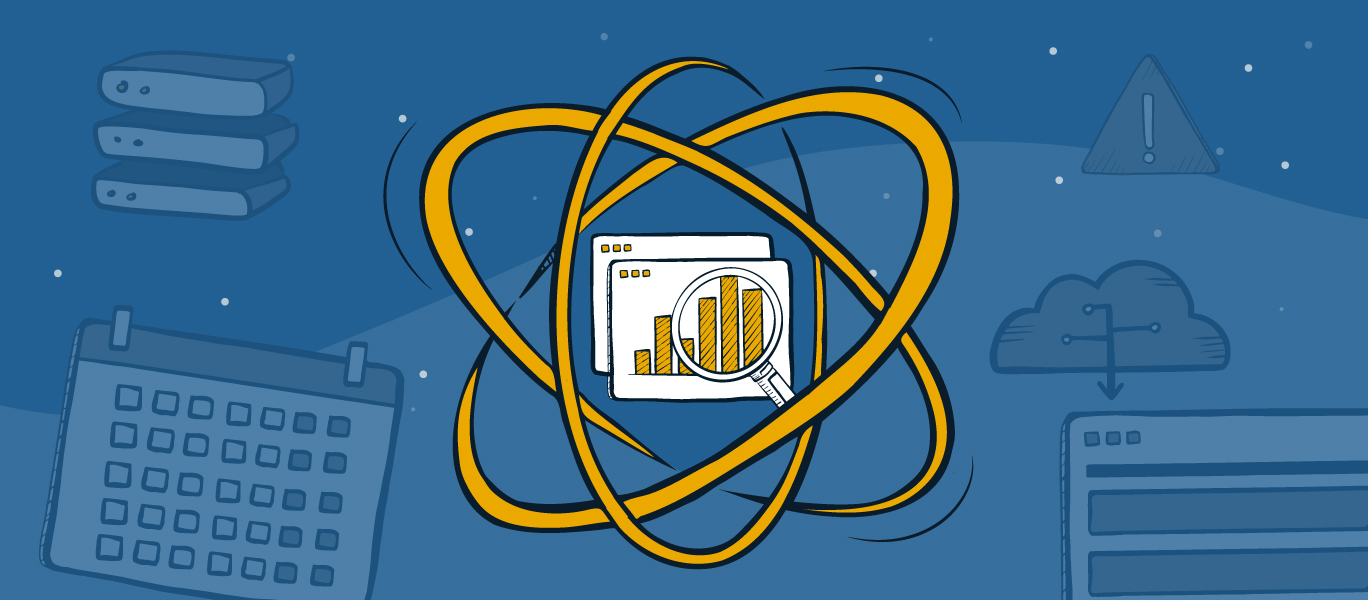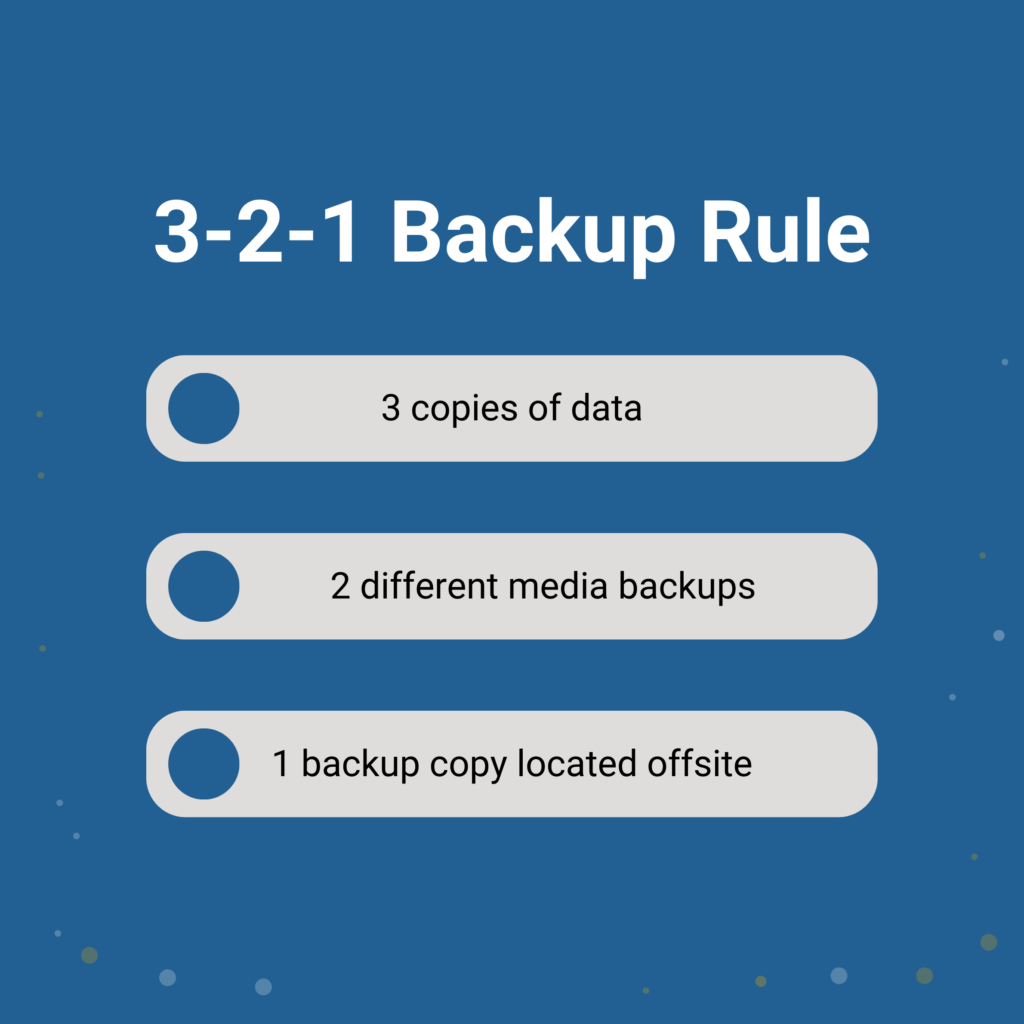
Did you know that 29% of data loss happens due to human error? Here’s how the 3-2-1 backup rule can save the day.
The security of backups is a constant factor MSPs need to manage in their support for clients. But simply backing it up isn’t going to provide enough security. You need a consistent, safe strategy.
Similar to insurance, backup security is something you hope to never use, but always need to have. Taking steps to secure the safety of backups can take a lot of time and effort. But all the work is immediately worth it once an MSP needs to restore data that has been lost.
Across the MSP industry, the 3-2-1 backup rule has been used to cover the different risks associated with keeping backups. The 3-2-1 backup rule is a strategy to have three copies of your data using a mix of local, off-site, and cloud backups.
The risks to your data can range from software corruption to bad weather, malicious cyber attacks, and theft. But with a strong backup strategy, your MSP will be able to help your clients bounce back from any data loss.
The 3-2-1 backup rule breaks down into three distinct parts. By incorporating all three sections into your backup strategy, MSPs can vastly improve the safety of data backups and the reliability of recovery.
The three sections of the 3-2-1 backup rule are:
These core aspects are at the heart of the 3-2-1 backup rule and all of its variations. Let’s dig into why each of the three rules are important.

To start, having multiple copies of any data is the foundation of this strategy. It’s common to have an in-house copy of your data, an off-site backup location, and a cloud backup.
If anything happens to your hard drive, a cloud backup exists. If a server in your office is damaged due to severe weather, an off-site backup will be safe.
Taking a diversified approach to security like this vastly increases the safety of your data. Depending on the type of data loss, accidental or intentional, there should always be at least one backup of the data that is accessible.
For the second point, having at least two independent types of media backup can further secure the information. Examples include a network-connected server and an external hard drive.
Cloud backups have made this part easy. The cloud offers even more flexibility and coverage than multiple physical backups.
The third point, offsite backups, is also covered well by cloud-based options. However, physical data backups kept in an offsite location can still be an important layer of security.
With widely-available cloud backup options, incorporating the 3-2-1 backup rule is easier and more cost-effective than ever. They’re both inexpensive and scalable to your clients’ needs, all while meeting the criteria of the offsite and media type requirements.
When all three points are covered, MSPs can be sure their clients’ data is secure in a way that keeps many recovery options open if data loss does happen.
If your MSP already manages client backups, using a 3-2-1 backup strategy is most likely already a part of your approach. If not, it can be implemented without a total rework of your service.

Regular backup intervals keep your client’s potential recovery potential consistent and up-to-date. Make sure that backups are completed according to the schedule your client has agreed to.
Backup monitoring can be more difficult than it sounds. One common problem MSPs run into are “no result” backups. These are backups that don’t send an error notification because they don’t create a failed result and do not complete the backup.
No result backups can lead an MSP to completely miss the error in their monitoring process.
Manual monitoring can often be time-consuming and vulnerable to human error. To stay on top of your backups, automated backup monitoring can save you hours per week.
Not all data is equally important. Have a discussion with your clients to determine what data is of the highest priority to be backed up. This will help clients understand what they need to operate their business.
Keeping a client’s operational and high-priority data backed up regularly is a good approach. Low-priority data can be backed up at less frequent intervals.
Automating the backups according to schedule is important. But if you aren’t testing that the data is recoverable you could be missing a crucial piece of the process.
Your backups won’t do much good unless you can actually restore from them.
By testing your backups, MSPs can see if any errors occur in recovery. Once errors are identified, your staff can fix the problem before it prevents a client from restoring their data in an emergency.
Regular testing will ensure the process is still functioning and can show your technicians if any changes or fixes are needed.

Always keep your clients informed. Monitor backups faster and easier than ever with Backup Radar.
Communicating with clients about your approach to backups will make your efforts much more successful. When a client is brought into the process, MSPs can tailor your backup plan to meet their needs.
When a client works with sensitive data that has compliance regulations, you can focus on how to best manage backups for compliance.
Keeping client business continuity in mind helps to ensure that the disaster recovery process is fast and effective. Clients will be able to bounce back from any data loss without missing a step.
Building trust through safety and security can be one of the most important wins an MSP can get in their relationships with clients.
The 3-2-1 backup strategy isn’t a concrete solution either. Many variations of the rule exist that are adapted for an MSP or client’s procedures.
The key is to find the right fit for your business. Adapt the process to keep your staff efficient and effective while providing the best service possible.